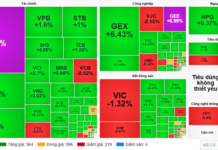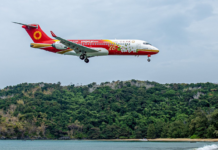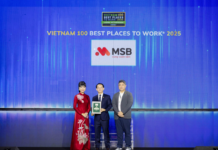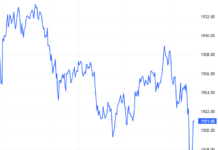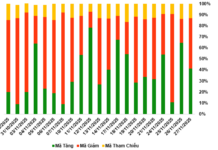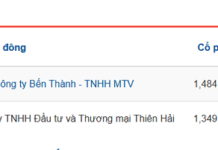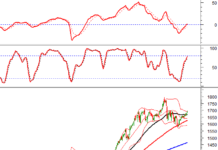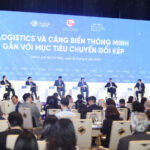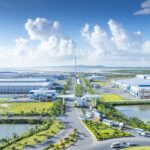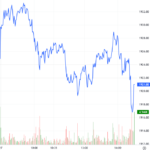At the 2025 Autumn Economic Forum in Ho Chi Minh City, Benoit de Quillacq, Managing Director of MSC Vietnam, expressed MSC’s ambition to bring larger vessels to Vietnam. To achieve this, he emphasized the need for the country to enhance deep-water port capacity, ensure smooth barge traffic, increase bridge clearance for larger barge convoys, and develop a clear multi-modal connectivity strategy.
Expanding on the theme of smart logistics and ports, he highlighted three global trends in maritime transport: reducing emissions, digitalization, and enhancing supply chain resilience. “Decarbonization, digitalization, and resilience are not separate goals but a single narrative that must be addressed holistically,” he stressed.
For MSC, digitalization primarily serves operational efficiency. Technology ensures smoother operations in maritime transport, ports, ICDs, and warehouses, leading to cost savings and enhanced competitiveness. In a cost-driven market, digitalization is no longer optional.
Regarding emission reduction, MSC has been pursuing this goal for years. The company is developing vessels powered by LNG, bio-LNG, and renewable energy, with approximately 150 new ships set to join the fleet soon. According to Benoit de Quillacq, achieving net-zero emissions by 2050 is a core commitment for MSC, influencing all decisions on fleet, technology, and operations for decades.
Ultimately, all strategies converge on one key concern for Vietnamese exporters and importers: whether goods benefit from direct routes, stable transit times, and reasonable costs. From MSC’s perspective, shippers need direct routes, predictable transit times, and seamless connectivity from ports to ICDs and final warehouses.
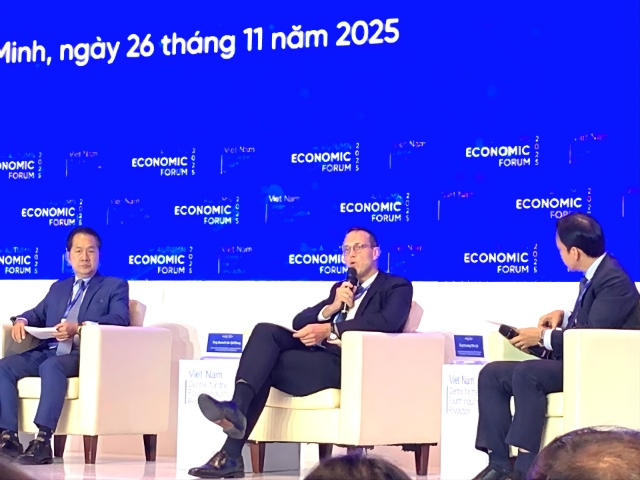 Benoit de Quillacq (holding the mic) at the forum on November 26 – Photo: Tu Kinh
|
Experts also praised the adaptability of Vietnamese authorities and businesses during recent volatile periods. However, to sustain growth as trade expands, port capacity becomes critical. Vietnam is competing directly with major hubs like Busan, Shanghai, and Singapore, and deep-water port scale is a key metric in this race.
Benoit de Quillacq noted that the list of berths in Vietnam capable of handling 200,000 DWT vessels remains short. While the two existing berths are positive, they are insufficient given the rapid growth in container traffic. MSC aims to deploy larger vessels and add direct routes to Vietnam, but this is only feasible if “ships have berths, and containers can move through a robust hinterland.”
The Southern region best illustrates this challenge. The ICD system around Ho Chi Minh City benefits from a dense river network, with 95% of the market relying on barge transport. However, this advantage is underutilized due to limited waterways and technical infrastructure. MSC Vietnam representatives noted that “the journey from Cai Mep to Ho Chi Minh City is as long as from Singapore to Cai Mep.” The solution lies in reorganizing barge routes, improving productivity at deep-water ports, and avoiding container congestion due to slow hinterland clearance.
Another critical yet overlooked issue is bridge clearance. As the market grows at double-digit rates, larger barge convoys are inevitable. Currently, barges carry around 300 TEU, suitable for present needs but insufficient for the future. To optimize costs and capacity, barges must be larger—and this requires sufficient bridge clearance.
Benoit de Quillacq proposed planning new ICDs north of Ho Chi Minh City alongside designing river-crossing bridges with adequate clearance for future barges. Ports must be planned in conjunction with hinterland waterway operations from the outset.
In MSC’s envisioned “hinterland landscape,” barges are just one component. In the North, deep-water ports could soon connect to railways for transport to China and Europe. “The same could be achieved in the South with rail links to deep-water ports, enabling containers to reach much further inland,” he suggested. MSC has also invested in a road container fleet in Vietnam, viewing it as a “critical piece” alongside waterways and future railways. The ultimate goal is a multi-modal ecosystem where each mode complements, rather than competes with, others.
MSC’s operational philosophy prioritizes direct routes over multi-layered transshipments. Thus, deep-water port capacity and hinterland connectivity in Vietnam are strategically vital: more direct routes require stronger berths and multi-modal networks to support them.
Infrastructure investors at the forum also acknowledged this trend. A representative from a port design consultancy noted that digitalization is a tool for a smart and green logistics ecosystem, with “digital twins” optimizing operations, reducing energy consumption, and mitigating climate change risks. For Vietnam to accommodate larger ships, ports must not only have deep channels but also climate-resilient designs for maximum efficiency.
Benjamin Lim, Strategy Director at YCH, a Singaporean logistics group, shared that the company has shifted from providing logistics services to developing “super logistics ports,” with the first project near Hanoi. This model integrates road, rail, and water transport with technologies like warehouse management systems, IoT, and control centers. YCH is also investing in workforce training, offering a 9-month program in Singapore for Vietnamese students to “learn logistics through real-world experience.”
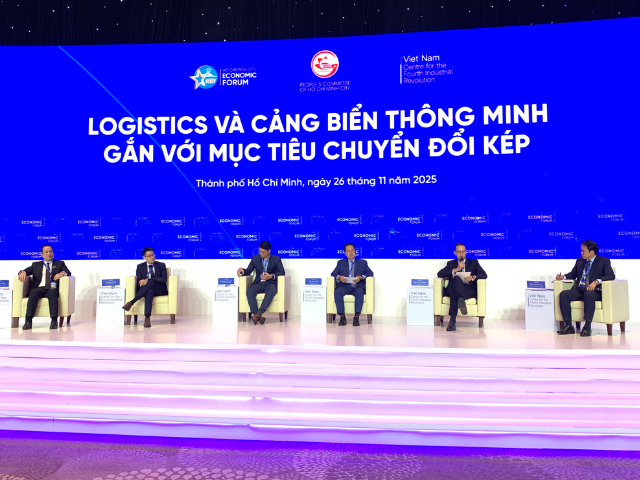
Experts speaking at the forum – Photo: Tu Kinh
|
According to Lim, digitalization is not just for large corporations. Data is the “new currency” of logistics, and small businesses that fail to adopt digital platforms will struggle to compete. YCH is piloting a “digital logistics marketplace” connecting manufacturers with carriers and banks to optimize partner matching and funding.
Domestically, Vietnam’s logistics sector has much to address. Le Duy Hiep, CEO of Transimex, noted that the industry is valued at $70-76 billion, with logistics costs accounting for about 16% of GDP. “There are around 40,000 logistics companies nationwide, 75% of which are small and medium-sized. For these firms, investing in digitalization is challenging, despite its necessity,” he observed.
Transimex is implementing a TMS system for transport, WMS for warehousing, and domestically developed container port management software, now used at over 20 berths. The company has also launched an automated warehouse in Long An with a 60,000-pallet capacity operated by robots and equipped solar power for logistics centers from Long An to Hanoi.
Hiep emphasized that digitalization and green logistics must go hand in hand, as ESG standards are becoming prerequisites for global supply chain participation. Following its merger, Ho Chi Minh City now has over 10 million residents, requiring a unified urban logistics plan integrating infrastructure, ports, logistics centers, and residential areas. Without this, congestion and conflicts between cargo flows and urban life could mirror issues in Bangkok or Manila.
Internationally, experts agree that for Vietnam to become a smart logistics hub, a national “digital backbone” is essential, with the Port Community System (PCS) at its core. PCS connects shipping lines, ports, customs, and road/rail transport on a neutral platform, enabling “single-window reporting” and real-time tracking.
Some experts cited Singapore’s Tuas Port—a large-scale automated container port with a 65 million TEU annual capacity—as a benchmark for next-generation logistics. Globally, only a few dozen ports are automated or semi-automated, and Vietnam is preparing its first such projects. If executed well, this could propel Vietnam’s port and logistics ecosystem into the region’s top tier within a decade.
– 15:54 27/11/2025
Unlocking Vietnam’s Potential: The Rise of Smart, Sustainable Green Ports
Vietnam and Ho Chi Minh City hold immense potential to develop green ports, smart ports, and emerge as a regional logistics hub, according to domestic and international experts. However, realizing this vision requires significant breakthroughs in infrastructure, human resources, and regional connectivity.
Why Dong Hai is Emerging as Hai Phong’s New Central Business District (CBD)?
Dong Hai, formerly known as Hai An District, is emerging as the new Central Business District (CBD) not only for Hai Phong but for the entire Northern region of Vietnam. Its unparalleled infrastructure, including an airport, seaport, railway, industrial zones, and a free trade area, sets it apart as a uniquely connected hub unmatched by any other area in the North.
European Investors and Kinh Bắc Propose $14 Billion Mega-Project in Hai Phong, Following Vingroup’s Landmark Initiative
Hai Phong has announced the establishment of a special task force dedicated to assisting Kinh Bac and CTP Invest Ltd in expediting their procedural completion. This initiative aims to provide the most favorable conditions for both survey and investment processes, ensuring seamless support throughout.
Global Logistics Leader Expands Investment Partnership in Vietnam
On the morning of November 18, 2025, in Hanoi, Mr. Vincent Clerc, Global CEO of A.P. Moller Maersk (Denmark), along with a high-level leadership delegation, visited and held discussions at Hateco Group, a company actively investing in logistics infrastructure in Vietnam.

